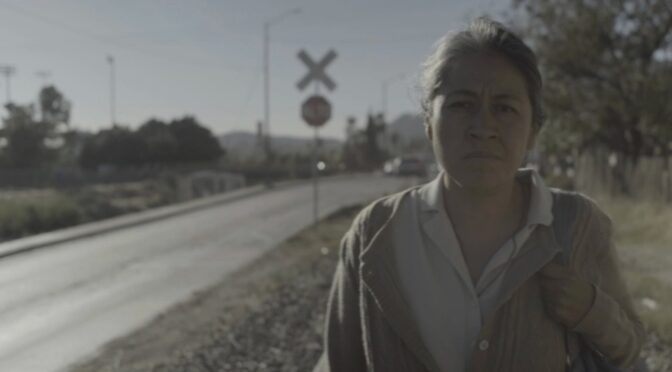 A visually stunning first feature from director Fernanda Valadez, SIN SEÑAS PARTICULARES follows a mother’s search for her missing son in Mexico. A blend of understated yet heartfelt drama, Valadez’s film is a beautifully shot story of a maternal odyssey of loss.
A visually stunning first feature from director Fernanda Valadez, SIN SEÑAS PARTICULARES follows a mother’s search for her missing son in Mexico. A blend of understated yet heartfelt drama, Valadez’s film is a beautifully shot story of a maternal odyssey of loss.
We spend almost the entirety of the story with Magdalena after her son Jesus departs to cross into Arizona with his friend Pedro. While Pedro’s death in an attack on the boys’ bus is confirmed, Jesus’s body is not found. Magdalena, believing her son to be alive, sets out to track him down. A parallel story, which eventually intersects, is also shown in the form of Miguel: a young man deported from the USA back to Mexico.
Although the lead performances from Hernández and Illescas are undoubtedly engaging, it is the cinematography work of Claudia Becerril and shot choices of Valadez that elevate SIN SEÑAS PARTICULARES from contemporary drama to excellent cinema. The frequent use of bokeh is not a particularly revolutionary visual embellishment, but is beautiful to look at and evokes the isolation of the people we are following. In softening the image around them, the techniques are metaphorically representing the lack of certainty our characters have of what surrounds them. As Magdalena sits in a local authority office to try and get someone – anyone – to take her concerns seriously, the fluorescent light and consequent hum resound the clinical and indifferent wall of disinterest she faces. The frequent use of close-ups framing Magdalena reinforces this isolation and lack of engagement around our characters, making the visual storytelling in a dialogue-sparse story more than up to the challenge.
Many of the nighttime visuals lend themselves nicely to this aesthetic approach, but the blocking and framing once again show the creative team behind the film have a keen understanding of the story they want to show. As Miguel returns to Mexico after his deportation, we follow him in one uncut take as he approaches the immigration controls and back into the homeland he wished to leave behind. This sequence, consistently and methodically paced, has the feeling of gingerly returning to the belly of the beast. It contrasts beautifully with a similar shot, this time a reverse one in front of Magdalena near the film’s end. At every stage, the film keenly emphasises enduring but possibly futile hope on both sides of the coin, represented by Miguel and Magdalena: those who leave and fall to nefarious forces, and those they left behind.
As with many films made in a similar style, the pacing and construction is very consistent and doesn’t rely on an acceleration of drama to engage in the story. As a first feature, Valadez’s film is remarkably accomplished and – contrary to the slightly duller English translation of the title would imply – has many ‘identifying features’ that mark out the director as one to pay attention to.

